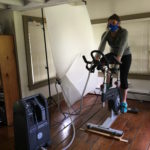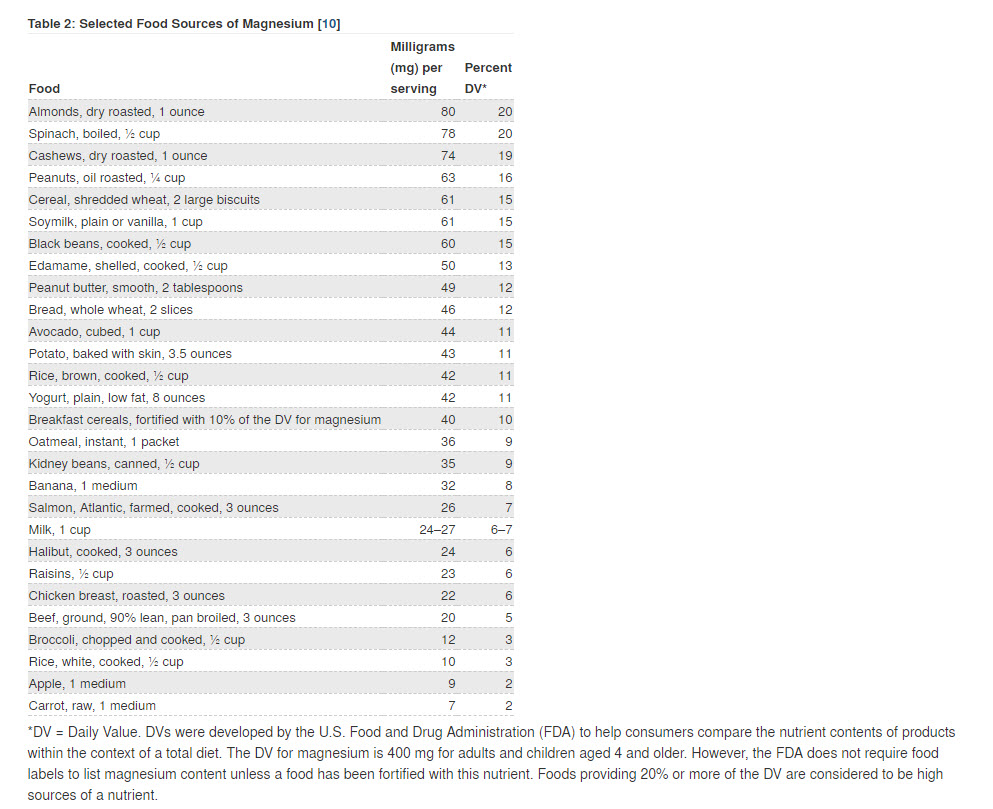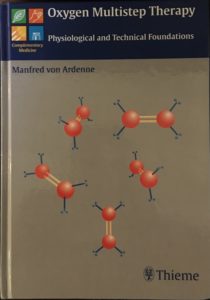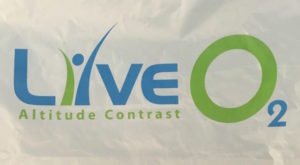Happy Gut, Healthy Body
The foundation of good health starts with a healthy, happy digestive system.
The gut is where many of the most important processes happen in the body such as eliminating toxins, absorbing nutrients, filtering out viruses and bacteria, and supporting the immune system. When our gut is in optimal shape, our body tends to be healthier overall. Below are five areas everyone can address in order to help improve their gut function. However, keep in mind that each of us has an individual picture of health. That is why we recommend that you consult with us about your own digestive wellness so we may help you design and implement a comprehensive health plan.
Probiotics
Probiotics are beneficial strains of bacteria that occur naturally in the body. They help break down food, aid in digestion, make some nutrients more bio-available, and combat the overgrowth of unhealthy bacteria. The use of pharmaceuticals, antibiotics, and chronic stress all compromise health levels of beneficial bacteria, making it harder for them to do their job. Many of us need daily supplementation with a high quality probiotic. It is important to maintain the quality of your supplement by keeping it refrigerated. Also, help feed good bacteria with fermented foods (sauerkraut) and special soluble fibers (inulin and arabinogalactans).
Food Sensitivities
To immediately improve your gut health you should eliminate from your diet foods to which you have allergies and sensitivities. Food sensitivities are not as obvious as anaphylactic food reactions - such as hives, inflammation, difficulty breathing or rashes. That deals with a different part of the immune system. Food sensitivities are foods that you might eat on a regular basis to which your body has developed a chronic low-grade intolerance. If the problem is left untreated, your body can become over-reactive to many kinds of foods, even some you don't eat regularly. The four most common foods are wheat, dairy, soy, and eggs. While the elimination diet is the standard for food sensitivities, there are affordable laboratory tests that we regularly order for our patients that make the process of elimination simple and effective.
Elimination
One of the most critical parts of a healthy gut is good elimination. There is quite a bit of evidence about your overall state of health by the number of bowel movements you have a day as well as the quality. Soluble and insoluble fiber will help with elimination, as well as exercise and stretching. It is important to have the right balance in your transit time between when you eat and when you have a bowel movement. If you are constipated, it means that toxins and body waste are sitting in your intestines. You run the risk of reabsorbing some of the toxins and damaging the intestinal barrier (click here: The Intestinal Barrier). If your transit time is too quick, your body doesn't have time to absorb the nutrition from your food.
Hydration
An important aspect to elimination and a healthy gut is proper hydration. We need water to flush toxins, absorb nutrients through osmosis, and help prevent the gut from becoming constipated. Make sure to include clean sources of water in your daily routine. Staying hydrated throughout the day is more beneficial to your body than hydrating with several glasses of water all at once. While flavored beverages can be appealing, added sugars, caffeine, dyes, and other chemicals will negate any positive effects. Water is necessary in and of itself, so make sure to get enough pure, clean water in your diet as necessary.
Stress Reduction
Our gut is often thought of as our emotional center. We get butterflies in our stomach, or nausea with stage fright, or we may have a gut feeling. However, chronic negative feelings like anger, guilt, and anxiety can have a negative impact on our gut health. It is important to be mindful of the amount of chronic stress you have in your life. Conscious breathing or taking deep refreshing breaths several times during the day can help release any stored up tension in your gut. To help patients with chronic stress we are Certified in HeartMath (click here: HeartMath for Emotional Management). The unique and effective A.R.E. Program was designed to help patients manage and eliminate the physiological effects of chronic stress.
References
Gaby, A. (2011). Nutritional medicine. Concord, N.H: Fritz Perlberg Publishing.
Murray, M. T. (1997). Chronic candidiasis: Your natural guide to healing with diet, vitamins, minerals, herbs, exercise, and other natural methods. Rocklin, CA: Prima Health.
LiveO2 Featured On Wordwide Business
LiveO2, as a part of Whole Health Network, was very recently featured on Worldwide Business with Kathy Ireland® to discuss restoring vitality with oxygenation technology.
Take a look at the full story in the video below!
The Forgotten Mineral: The Effects of Magnesium Depletion
What Does Magnesium Do?
Magnesium is one of the most important minerals necessary for the overall function of the human body. It is essential for maintaining the cardiovascular, neurological, musculoskeletal, immunological, and reproductive systems. When the body doesn't receive the right amount of magnesium, there is an increased risk of painful chronic diseases. Magnesium is in the top four of essential minerals. The body uses it for over 300 biochemical interactions, most of which are vital to supporting the nervous system. Additionally, magnesium is responsible for several other functions, such as:
- Assisting in controlling glucose and blood pressure levels
- Boosting metabolism
- Breaking down protein
- Influencing bone health
Magnesium is also a key player in the muscular system. Supplements such as magnesium glycinate (Amino Mag Powder) can be used to help increase magnesium levels to have a calming and muscle relaxation effect. This supplement may be helpful for muscle spasms, chronic pain and supporting sugar and heart metabolism.
How Low Magnesium Levels Triggers Chronic Disease
When magnesium levels get critically low, it can affect the body’s basic functions. In addition, it can lead to serious chronic diseases. Recent studies have shown that low magnesium levels can increase the risk of cancer and neural behavioral disorders such as ADHD. Other studies have shown that certain neurological diseases may result in severe deficiencies. As the study of magnesium continues, scientists are discovering its contributions to several recognizable chronic diseases. Many studies have shown that magnesium depletion is a problem in patients being diagnosed with disorders such as:
- Fibromyalgia
- Diabetes and Insulin Resistance
- Kidney Stones
- Chemical Toxicity
- Osteoporosis
- Premenstrual Syndrome
" Generally, the significance of healthy magnesium levels is overlooked. Our patients are becoming more aware of the role magnesium plays and how to avoid depletion through diet and supplementation. We educate our patients that it is necessary to consume at least 400 mg of magnesium daily. "
Dr. Gary Gruber
Symptoms of Magnesium Depletion
The human body is multifaceted and will send signals when it’s not getting enough of something. As a result, it’s important for people to understand that the fundamental part of maintaining a healthy level is recognizing when there's a problem. Several signs and symptoms of magnesium depletion include:
- Dry or coarse skin
- Brittle nails
- Sudden fatigue
- Muscle spasms
- Cardiac Arrhythmias
- High Blood Pressure
- High Cholesterol
- Bronchospasms
- Headache
- Insulin Resistance
Magnesium depletion can also cause anxiety and depression due to a chemical imbalance in the brain. Anyone who experiences these symptoms should seek medical attention and develop a plan of action with their physician. Pregnancy may contribute to low magnesium levels. Low magnesium in pregnancy has been linked to preeclampsia a condition of high blood pressure, protein in the urine, and swelling of hands and feet. However, eating a Mediterranean diet and taking prenatal vitamins with extra magnesium supplementation will ensure steady magnesium levels throughout pregnancy.
Preventing Magnesium Depletion
Avoiding chronic disease because of low magnesium levels requires adults and teens to be proactive about their health. The following table shows common food sources of magnesium that should be rotated throughout the daily diet:
Adults and teenagers should also consider taking magnesium supplements. Amino Mag Capsulesare a high potency and very absorbable form of the mineral.Before taking supplements whether vitamins, minerals, amino acids, and antioxidants it is appropriate to test for deficiencies. While a blood test for magnesium is standard, a comprehensive functional nutrition test such as Genova’s NutrEval will provide extensive information for mineral deficiencies.
Endnotes:
https://medicalxpress.com/news/2013-05-magnesium-important-kids-bone-health.html
http://ajcn.nutrition.org/content/45/5/1305.long
https://en.wikipedia.org/wiki/Magnesium#Biological_role
http://www.nhfw.info/magnesium.html
https://www.ncbi.nlm.nih.gov/pubmed/16846100
http://care.diabetesjournals.org/content/29/10/2238?sid=92f080cb-ecf1-46c8-bb94-b590321915b9
https://www.ncbi.nlm.nih.gov/pubmed/22318649
https://www.ncbi.nlm.nih.gov/pubmed?cmd=Retrieve&dopt=Citation&list_uids=17413107
http://www.mgwater.com/rod02.shtml
How Nasal Irrigation Can Help Relieve Colds, Allergies, And Sinus Congestion
Anyone looking for an all-natural, holistic way to help relieve the symptoms of painful allergies, troublesome colds, and regular sinus congestion, should be interested in nasal irrigation. Nasal irrigation has been growing in popularity, and the basic principle behind it is simple.
Using a simple device such as the popular Neti Pot, or another specialized device such as a squeezable bottle, a warm, slightly saline solution of water is poured into the nose and through the sinus cavity.
This solution can help cleanse the cilia of the nose of thick mucus, remove crusting caused by dry air or colds, and clear the nasal passages of debris and pollen which can irritate the nose and cause allergic symptoms.
Is Nasal Irrigation Effective?
Though nasal irrigation has been growing in popularity, there are some naysayers who claim that it is ineffective. However, this is not true – nasal irrigation has been proven by multiple studies to be a safe and effective way of fighting issues like colds, allergies, and chronic sinus congestion.
A systematic review of available scientific studies showed that routine nasal irrigation was especially effective at:
- fighting allergic rhinitis,
- improving symptoms,
- reducing the need for medication, and
- improving quality of life.
Another randomized, controlled trial performed on adults with chronic sinus/nasal symptoms showed similar results, with patients reporting symptom improvements of up to 60% after eight weeks when using a low-saline solution and an appropriate low-pressure device.
The science is clear – nasal irrigation, whether through a low-pressure device such as a squeezable bottle or a Neti Pot, is an effective way to combat allergies, sinusitis, and much more.
Tips for Successful Nasal Irrigation
Looking to try nasal irrigation? Follow these tips to successfully use nasal irrigation techniques, and relieve painful symptoms of allergies, sinusitis, colds, and more!
- Choose the right product – For those who are seeking a traditional method of nasal irrigation, a Neti Pot is a great choice. These pots have been traditionally used by yogis in India for millennia.For others who seek a more modern form of nasal irrigation, squeeze bottles are a good choice – these specialized products apply gentle pressure through a tube, and are often a better option for those with severe allergies and sinusitis.
- Don’t use tap water – Nasal irrigation with tap water can be dangerous – leading to potentially deadly viral infections from meningitis and Naegleria fowleri amoebas.Distilled water is a better choice for nasal irrigation, though tap water can be used if it’s boiled and treated with specialized, non-iodized salt.
- Use specialized nasal irrigation salts – Salts that have been specially designed for nasal irrigation are required for optimal performance. Substances like iodine can lead to allergic reactions, decreasing the efficacy of the nasal irrigation regimen. For this reason, salts that are free of iodine and other contaminants are preferred when using nasal irrigation devices.
These simple tips will be helpful to anyone who is looking to take advantage of the health benefits of nasal irrigation.
Try Nasal Irrigation Today – Enjoy Holistic, Natural Relief!
Anyone suffering from allergies, sinusitis, or a cold should try nasal irrigation immediately. It’s safe, effective, and proven to be helpful – making it a fantastic choice for anyone who needs relief, but is wary of pharmaceutical products or over-the-counter medications.
Once you try nasal irrigation you may decide to make it part of your regular daily hygiene. It’s just as effective today as it was when it was first practiced by Hindu yogis in India thousands of years ago – and is proven to be helpful in relieving many painful or annoying nasal symptoms.
LiveO2 Can Save Your Life
In this podcast, Tom Butler explains the concept of super-oxygenation and how different parts of the body have priority for oxygenation.For many reason, certain body systems may be deficient in oxygen for extended periods of time,leading ultimately to dysfunction and then disease.
The interviewer and host, Stephan Spencer, first experienced the benefits of LiveO2 at a health conference. At the conference, he met Kristen who was demonstrating the equipment and explained how LiveO2 gave her back her life. Listen to this podcast to hear her powerful testimonial about her LIFE-SAVING experience with LiveO2.
How to Boost Your Body & Brain: the Optimized Geek Podcast
Tom Butler, VP and Partner at LiveO2, was interviewed by the folks at Optimized Geek Podcast. The podcast focuses on different tips, tricks, and ways to help reboot your life. Click on the player above to hear Tom Butler talk about the science behind super-oxygenation!
Kill Your Allergies, Not Your Brain
Summer is a time of renewal for many. After months of hibernation, people can’t wait to break open the windows and rediscover their love of nature and the outdoors. Unfortunately for 50 million Americans with seasonal allergies, this season of rebirth is marred by the pollen generated from the newly beautified nature. These summertime woes have recently grown considerably worse; climate change has lengthened the pollination season, and the National Wildlife Federation expects allergies to worsen for 25 million Americans due to higher than average temperatures .
Seasonal allergy symptoms can move beyond common irritation.
Beyond simple runny noses and sneezing, sufferers report congestion, itching eyes and skin, and even more serious symptoms such as . Your body’s steady release of histamine to respond to the increased levels of pollen and mold in the air also increases inflammation throughout the body, which can lead to anxiety, cognitive losses, digestive issues, eczema, and migraines.
With no comprehensive cure for allergies on the horizon, millions of Americans have resorted to popular over-the-counter supplements to treat their seasonal allergy issues. While these supplements may act as a short-term fix, they also carry a myriad of side effects such as drowsiness, nausea and vomiting, and can even increase the risk of dementia . Many Americans do not have the ability to absorb days and weeks lost to allergies or medication side effects, yet are often forced to choose between two undesirable options.
Allerg-Eze is here to put a stop to all of this.
The FDA-compliant formula merges science and nature, stripping out all added sugar, preservatives, artificial colors, and additives. What’s left is rapid, long-lasting allergy relief. Allerg-Eze leverages the power of Stinging Nettle to treat patients effectively without the long-term risks associated with antihistamines. In a recent study, 48% of respondents reported that nettle capsules treated their allergies more effectively than allergy medications they had utilized previously. By cutting out the unnecessary ingredients and focusing on time-honored holistic traditions, Allerg-Eze delivers a more effective and natural solution for customers in need.
"Many of our patients are pleasantly surprised at the effectiveness of the AllergEze formula. It does not cause drowsiness or any of the other symptoms associated with prescription or over-the-counter pharmaceuticals." -Dr. Gary Gruber
Let’s face it: the current options will not do. If you feel trapped between the choice of suffering through your seasonal allergies or suffering through extensive medicinal side effects of heavy drugs, understand there is a third option at your disposal. You should never be forced to side between the treacherous whims of mother nature and the padding of profits for pharmaceutical companies.
So let’s start this journey together. One day at a time, Allerg-Eze can help you get through the worst of your seasonal allergies so you can get the best out of your daily life. Whether you need to finish a project at work, drop the kids off at soccer, or just kick back and catch up on your shows, trust us to deliver the relief you need, when you need it.
Heartmath Tools for Emotional Management
The Heart's Intuitive Intelligence - a path to personal, social, and global coherence
During consultations with patients about their heart rate variability we discuss the phenomena called coherence. The following video is a wonderful introduction about coherence.
https://www.youtube.com/watch?v=QdneZ4fIIHE&feature=youtu.be
What are the core components of Heartmath?
1. Heart Focus:
Focus your attention in the area of your heart. If this sounds confusing, try this: Focus on your right big toe and wiggle it. Now focus on your right elbow. Now gently focus in the center of your chest, the area of your heart. (Most people think the heart is on the left side of the chest, but its really closer to the center, behind the breastbone.)
You may want to put your hand over your heart to help you keep your focus there. If your mind wanders, just keep shifting your attention back to the area of your heart while you do Heart Breathing and Heart Focus.
2. Heart Breathing:
As you focus on the area of your heart, imagine your breath is flowing in and out through that area. This helps your mind and energy to stay focused in the heart area and your respiration and heart rhythms to synchronize. Breathe slowly and gently in through your heart (to a count of five or six) and slowly and easily out through your heart (to a count of five or six).
Do this until your breathing feels smooth and balanced, not forced. You may discover that it's easier to find a slow, easy rhythm by counting "one thousand, two thousand," rather than "one, two." Continue to breathe with ease until you find a natural inner rhythm that feels good to you.
3. Heart Feeling:
Continue to breathe through the area of the heart. As you do so, recall a positive feeling, a time when you felt good inside, and try to re-experience it. This could be a feeling of appreciation or care toward a special person or a pet, a place you enjoyed, or an activity that was fun. Allow yourself to feel this good feeling of appreciation or care.
If you can't feel anything, it's okay; just try to find the attitude of appreciation or care. Once you found it, try to sustain the attitude by continuing your Heart Focus, Heart Breathing, and Heart Feeling.
Heartmath Tools & Resources
- Neutral Tool (CLICK HERE)
- Quick Coherence Tool (CLICK HERE)
- Attitude Breathing Technique (CLICK HERE)
- Depletion to Renewal Plan (CLICK HERE)
- Heart Lock-In Technique (CLICK HERE)
- Personal Practice Log (CLICK HERE)
The Intestinal Barrier: Gateway to a Healthy Immune System
Bacteria, viruses, fungi, man-made toxins, and natural toxins are everywhere.
They are in food, air, and water. Bacteria and viruses can be transferred by specific vectors like ticks and mosquitos. There is no place to escape. Nevertheless, the human body is equipped to handle these ubiquitous influences because of the barriers to entry into the body.
The most obvious barrier is the skin. Seven layers of epithelial cells are stacked and closely knit together by proteins called keratins. The lining of the intestinal tract has a barrier. The lungs have a barrier. And just in case something gets through these three gateways, there is a blood-brain barrier.
The gut barrier is one of the three functions of digestion. As an analogy, if you thrust your fist into a balloon, the outside skin becomes the inside skin. In between the inside skin and the outside skin is air. The air represents your body. Accordingly, when you ingest something it is technically not in your body until it crosses the barrier.
The gut barrier is composed of a thin lining of mucous over a single layer of epithelial cells, the same cells that comprise the skin. Between each cell is a zipper-like protein that is called the tight junction. When the tight junction is broken, the gut barrier is compromised. This condition is referred to as intestinal permeability or sometimes “leaky gut”.
It is estimated that seventy percent of the immune system is located in the gut.
There is a constant, enormity of activity from destroying and eliminating bacteria, fungus, and viruses. Undigested proteins from foods are recognized as viral proteins and treated as such by the gut immune system. The gut environment is a fine balance of inflammation and repair. Sometimes the influences overwhelm the immune defenses or the immune system overreacts, creating a chronic inflammatory environment. The overburdened immune system cannot prevent damage to the intestinal lining, an important barrier to the body and vital organs. Once past the gut barrier, the body or somatic immune system reacts vigilantly to the same bacteria, viruses, fungi, man-made and natural toxins. Bear in mind that the immune system is finite so without the gut barrier the somatic immune system can be easily overwhelmed. When the immune system cannot keep up with the chronic invasion, symptoms begin to develop. A compromised gut barrier is the very beginning of many symptoms, syndromes, and diseases.
Intestinal permeability is correlated with autoimmune diseases, headaches, insomnia, lyme disease, and psychological conditions including anxiety, depression, neurosis, and schizophrenia.
In its 2005 Report on Progress in Autoimmune Diseases Research the research committee stated “while many diseases (autoimmune) are rare, collectively they affect 14.0 to 23.5 million people in this country.” To put this into context, cancer affects about 12 million people and heart disease affects approximately 18 million people. Yet autoimmune diseases are more prevalent than cardiovascular diseases and cancer combined. In a 2011 study, the National Institute of Environmental Health Sciences estimates that “more than 32 million people in the United States have autoantibodies”. The 2005 report goes on to say “More than 80 human diseases are due at least in part to an inappropriate immune system response that results in damage to an individual’s organs, tissues, or cells. Autoimmune diseases can affect any part of the body, and have myriad clinical manifestations that can be difficult to diagnose. At the same time, autoimmune diseases share many features related to their onset and progression. In addition, overlapping genetic traits enhance susceptibility to many of the diseases, so that a patient may suffer from more than one autoimmune disorder, or multiple autoimmune diseases may occur in the same family.”
Some of the more commonly named autoimmune diseases are Psoriasis, Rheumatoid Arthritis, Hashimoto’s Thyroiditis, Hepatitis, Sjogren’s Syndrome, Lupus, and Multiple Sclerosis. At the core of these diseases is a hypervigilant immune system that attacks its own tissue because the tissue resembles a virus or other protein with which the immune system had an experience. This is called molecular mimicry and is an important understanding of the cause of autoimmune diseases. It is the undigested proteins, viruses, bacteria, fungus, and other environmental influences that pass through the compromised gut barrier and are attacked by the somatic immune system. The somatic immune system is on guard against any cell that even looks like the trespasser, including one’s own tissue and cells.
In a condition of intestinal permeability, the somatic immune system is overwhelmed and can barely keep up with the onslaught of influences, especially when it is confronted with the stealth bacteria Borrelia burgdorferi, the bacteria implicated with Lyme disease. Lyme disease is the symptom picture associated with an overwhelmed immune system combined with an unidentified autoimmune disease. Many of the psychological conditions, as well as insomnia, are part of chronic Lyme disease. Despite a multitude of physical and psychological symptoms, Lyme disease is the manifestation of leaky gut.
Once it is recognized, intestinal permeability can be repaired. First, remove the source of chronic inflammation. Then nourish the epithelial cells so they may replicate and develop new tight junctions.
We are proud to offer our own digestion solution products! You can view them here or by going to the FAM Dispensary. We offer the following product to help with intestinal permeability.Once the gut barrier is restored, the somatic immune system will rebalance itself and hyperactivity will subside.
Probiotics:
There are over 400 species and thousands of strains of bacteria that are supposed to inhabit the lower intestines and colon.
These 400+ species are collectively called probiotics, which means “for life”, and were initially discovered in the early 1900’s. These bacteria have many roles in good health such as making short-chain fatty acids (SCFAs), polyamines, vitamins, antioxidants, and amino acids. Another function, especially in the case of Lactobacillus species, is to prevent food from decay, preserve antioxidants and vitamins, remove toxins and keep pathogenic organisms at bay. A third and major role of probiotics is to maintain proper immune function. Among the various effects on the immune system, a specific action is to stimulate the action of white blood cells like the macrophages, natural killer cells, monocytes, and neutrophils.
When buying a probiotic, you want a multi-strain product called “broad spectrum”. It should have at least 8 different types of probiotic bacteria. Avoid supplements with fillers or preservatives. The probiotic formula should be designed to by-pass the stomach and deliver essential bacteria to the lower intestines. Extended periods of elevated temperatures will diminish the viability of the organisms. Therefore, probiotics should be kept refrigerated and used immediately.
References
http://www.agingsociety.org/agingsociety/pdf/heart.pdf
http://www.cancer.org/Cancer/CancerBasics/cancer-prevalence
Progress in Autoimmune Disease Research, National Institutes of Health The Autoimmune Diseases Coordinating Committee, Report to Congress, March 2005.
Turner J. Intestinal mucosal barrier function in health and disease. Nature Reviews/Immunology 9: 799-809, 2009.
Fasano, A. Zonulin and Its Regulation of Intestinal Barrier Function: The Biological Door to Inflammation, Autoimmunity, and Cancer. Physiol Rev 91:151-175, 2011.
Fasano, A. Mechanisms of Disease: the role of intestinal barrier function in the pathogenesis of gastrointestinal autoimmune diseases. Gastroenterology & Hepatology 2; 416-422, 2005.
Oldstone, M. Molecular mimicry and immune-mediated disease. FASEB J. 12, 1255-1265. 1998.
Satoh M et al. Prevalence and sociodemographic correlates of antinuclear antibodies in the United States. Arthritis and Rheumatism. doi:10.1002/art.3438
Alternative to Hyperbaric Oxygen Treatments
Athletes and Hyperbaric Oxygen
Over the past few months there have been news reports about athletes who are using hyperbaric oxygen chambers to support recovery from their day to day regimens of intense training and competition. As a avid tennis fan I found a newsworthy article in the Wall Street Journal about Novak Djokovic and other players at the 2015 Australian Open.
Recently, Family and Environmental Medicine has brought another similar yet more effective oxygen treatment i
EWOT is Anti-Aging and Longevity Medicine
Oxygen is the necessary material that every cell in the body uses to make energy efficiently. If oxygen doesn’t reach the tissue, diffuse into the fluids, then shuttled into the cell, energy efficiency is disrupted. When energy is inefficient the function of cells declines. It is well-established that by 50 years old, a person is absorbing about 50% of the oxygen that was available during their 20’s. This decline in oxygen absorption leads to many diseases as well as aging. Oxygen Multistep Therapy reestablishes oxygen absorption and is well-established as an “anti-aging” therapy (I like to call it aging gracefully).
Here is a short video that explains inflammation and poor oxygenation of tissues:
https://www.youtube.com/watch?v=v2a2azCm07o&feature=youtu.be
Exercise with Oxygen Treatments
Treatments: The patient’s treatment plan is thirteen 15-minute sessions, either once or twice weekly. The total cost of the treatment plan is $975.00. Therefore, the average cost per session is $75.00. Additional sessions after the initial treatment plan will be charged at $75.00 per session. The payments will be cash or credit only, i.e., no insurance reimbursements.
The treatments do not include the cost of oxygen mask, oxygen hose, and supplements. These costs will be charged separately. After the first session, the oxygen mask is required to be purchased. While certain supplements are recommended they are not required.
Family and Environmental Medicine help patients with Holistic Solutions that support health and well-being. Dr Gary Gruber provides private appointments for patients from around the country who seek health and healing with Complementary and Alternative Medicine. The majority of patients are from the local area of southern Fairfield County (including Greenwich CT, Stamford CT, Darien CT, Norwalk CT, New Canaan CT, Wilton CT), Westchester County, NY, NYC, and Northern NJ. For personal questions about Exercise with Oxygen Therapy, please contact us at (203) 966-6360.
LiveO2 is Exercise with Oxygen Therapy (EWOT)
Oxygen Multistep Therapy

He found that there was a common condition whereby the capillary beds were swollen, narrowed, and thicken thereby reducing blood flow, increasing blood viscosity and oxygen delivery to the tissues (see Anti Aging Medicine Exercise with Oxygen). He called this condition the Cellular Wall Switching Mechanism. He also discover that this condition was reversible. This condition is always present in the aging process but may also occur with:
- Infection
- Cancer
- Trauma
- Toxicity
- Low pH (acid)
- Allergic reactions
- Low and high blood pressure
- Anesthesia
- Noise
- Hormones
- Poor nutrition and diet
 Dr von Ardenne’s oxygen multistep therapy was studied and applied to reverse this switching mechanism.
Dr von Ardenne’s oxygen multistep therapy was studied and applied to reverse this switching mechanism.
The basic therapy was to have a patient exercise while breathing oxygen. The protocol was typically 18-days for 2 hours each day. First the patient took some nutrients (magnesium and thiamin) that enhanced the utilization of oxygen for energy production. After 30 minutes, the patient began to exercise (using a stationary bicycle or treadmill) while breathing oxygen through a mask with a storage balloon at a flow rate of four to six liters per minute.
Every 20 minutes the patient pushed his exercise capacity for two minutes to the aerobic target heart rate which increased cardiac output as well as oxygen delivery to hypoxic areas. After 36 hours of oxygen multistep therapy, the patient’s switching mechanism was generally found to be reversed.
Dr von Ardenne also used a modified protocol where the patient exercised at the target heart rate for 15 minutes at an oxygen flow rate of 10 liters per minute. This quick treatment protocol has been used extensively throughout the United States and Europe and is referred to as Exercise with Oxygen Therapy (EWOT).
LiveO2 is Exercise with Oxygen Therapy (EWOT)
The LiveO2 advanced delivery system is the latest and most improved technology for EWOT at this time. The advantage over other basic EWOT systems is the Altitude Contrast mechanism.
The human body is so programmed for survival such that when there is any change in oxygen concentration levels that there is an immediate physiological response to preserve the most important organs and systems. For example, when a person flies from New York at sea level to Denver at one-mile above sea level, the respiratory system is immediately challenged by the reduction of barometric pressure and oxygen concentration. This results is several changes to the respiratory and cardiovascular systems.
The carotid bodies are specialized cells that are located in the carotid artery that signal the brain that there is lower oxygen levels in the blood that is traveling into the brain. In response,
- The brain sends a signal to increase the rate of breathing and constrict vessels in the lung
- The brain sends a signal to increase the heart rate
- The brain sends a signal to dilate peripheral circulation to arms, legs, hands, feet, and head
Knowing these physiological changes occur rapidly, we can take advantage of it to provide enhanced EWOT. We can do this with the LiveO2 Altitude Contrast Mechanism. It is enhanced because the physiological change from Altitude Contrast are likened to opening the flood gates to allow massive infusion of oxygen into the tissues.
The LiveO2 Altitude Contrast Mechanism allows the patient to go from sea level to approximately 19,000 feet (and back again) by the flip of a switch. With the fast change in a patient’s altitude physiology oxygen uptake is significantly increases along with the resulting impact on energy production to the neurological, hormonal, immunological communication systems of the body as well as the high energy organs such as: brain, heart, muscles, liver, kidneys, and eyes.














